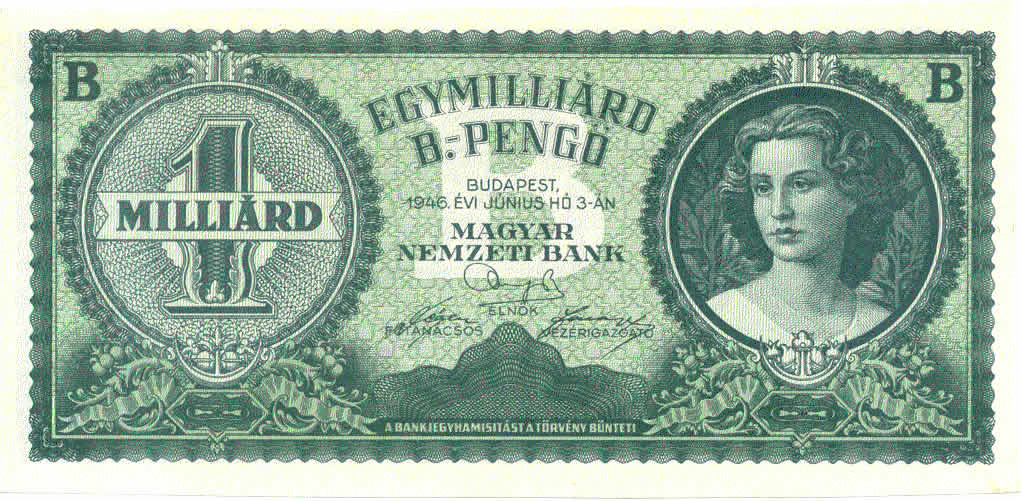When I wrote about hyperinflation the other day I included an image of a 100 trillion dollar note from Zimbabwe. This is almost a cliché: everyone using this image when talking about hyperinflation.
But Zimbabwe’s 1014 dollar note was not the largest denomination ever used. In 1946, Hungary circulated at 100 quintillion (1020) pengő note. It also printed, but did not circulate, a sextillion (1021) pengő note.

The note from Hungary doesn’t have the shock value of the one from Zimbabwe because the zeros are not explicitly written out. The note is for one millard (109) b. pengő, where the “b” stands for “billion,” which in the Hungarian use of the word is 1012. It’s understandable that a state would avoid making the worthlessness of its currency explicit by writing out the number
1,000,000,000,000,000,000,000.
Seven years and one day ago, I wrote about names for extremely large numbers. I looked at the frequency of use for words like quintillion and sextillion, and they are rare, as you’d expect. More interesting is the fact that frequency drops off almost linearly on a log scale.

one milliard is 10^9 and one (Hungarian, like French and German) billion is 10^12; the result is of course unchanged
Thanks!